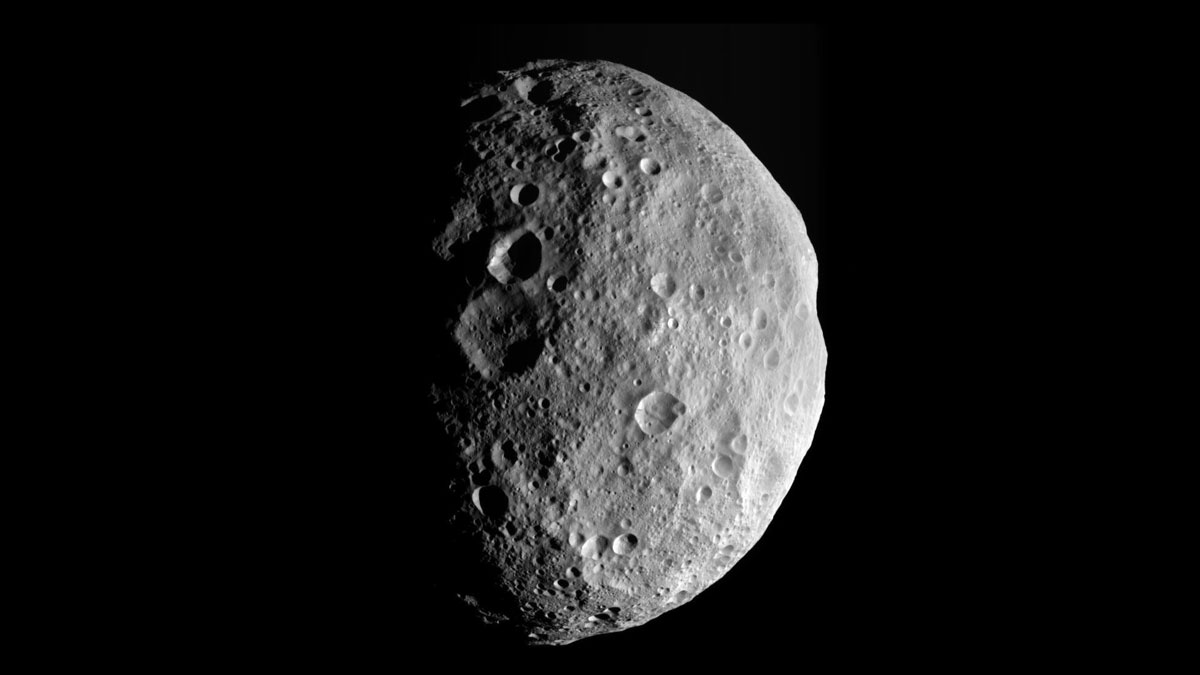“Everyone benefits from more accurate [orbital tracking] of the asteroids, from missions that are going there to observers on the ground that want to look at them from various telescopes.”
Data from the spacecraft that created the most accurate map of the Milky Way are being used to study objects in our own solar system. Information provided by the European Space Agency’s Gaia satellite have now enabled astronomers to measure the masses of hundreds of asteroids, allowing for improved orbital calculations.
“Everyone benefits from more accurate [orbital tracking] of the asteroids, from missions that are going there to observers on the ground that want to look at them from various telescopes,” said Oscar Fuentes-Muñoz, a NASA postdoctoral fellow at the Jet Propulsion Laboratory in California. Fuentes-Muñoz presented the masses of 231 asteroids he and his colleagues determined using Gaia last month at the Lunar and Planetary Sciences Conference in Houston.
The new research more than doubles the number of known asteroid masses, and the results are only the beginning.
“This work…is really pushing for high precision with novel techniques,” said Kevin Walsh, a solar system dynamicist who studies asteroids at the Southwest Research Institute in Colorado. Walsh was not part of the study.
Gravity Assist Asteroids
The new research relied on a familiar staple of Newtonian physics, taught in high schools everywhere: When two objects interact, each mass exerts a gravitational force on the other. The result is often negligible—the gravitational force of your phone isn’t going to pull you across the room.
But if the objects are moving and the mass difference is large enough, the more massive object will change, or perturb, the path of the less massive one. Fuentes-Muñoz called the phenomenon a “gravitational assist” and compared the relationship between massive and less massive asteroids to the way Earth’s mass perturbs the orbit of a satellite. “The mass of the satellite doesn’t affect the motion of the Earth,” he explained, but the path of the satellite can be dramatically altered.
Although they were not part of its primary mission, the star mapper Gaia was developed with solar system observations in mind and was able to tease out such interactions in incredible detail before being decommissioned in March. According to Gaia team member Mikael Granvik of the University of Helsinki, the telescope’s precision was comparable to observing a 2-euro coin on the Moon while standing on Earth.
As asteroids interacted, Gaia captured how their orbits shifted over 66 months. Fuentes-Muñoz and his colleagues used that information to determine the gravitational mass of the larger objects. Gravitational mass is a way to measure an object’s mass on the basis of how it moves in gravity, rather than calculating the object’s absolute mass in kilograms, for example. This type of measurement is commonly used to estimate the masses of solar system bodies as well as Earth-orbiting satellites and spacecraft.
Most of the 1.4 million known asteroids are too small to have their masses measured, however. “We can estimate things that are maybe…a thousand times smaller than Ceres, but not a million times,” Fuentes-Muñoz said.
Of the more than 1,000 large asteroids they observed, the researchers were able to more precisely calculate the gravitational masses of nearly 300 previously discovered objects. This calculation significantly increases the precision of asteroid orbits.
The dwarf planet Ceres is the largest object in the asteroid belt, and Fuentes-Muñoz calculated its gravitational mass, providing “ground truth” to previous measurements. The new research puts Ceres’s gravitational mass at 62.650 cubic kilometers per square second, which closely matches previous estimates and demonstrates the accuracy of the researchers’ technique. (For comparison, Earth’s gravitational mass is 398,600 cubic kilometers per square second.)
Gaia Is the Gift That Keeps Giving
Gaia wrapped up its mission after more than a decade in space, but new results continue to pour in. That’s due in part to the strict scrutiny the Gaia team uses before releasing data publicly.
Fuentes-Muñoz used the focus product release (FPR), sort of a halfway step between Gaia’s data release (DR) 3, released in 2022, and DR4. DR4 will be released no sooner than this summer, and DR5 won’t be released before the end of 2030.
“It was interesting to see that they got so many accurate masses already from just the FPR,” said Granvik, who reported the first observations of asteroid mass using Gaia in 2022.
“It’s a significant change overall. We’re going to get hundreds of asteroid masses.”
Granvik said Gaia will eventually provide “up to a tenfold increase in the sheer number of objects that we have masses” for.
Walsh said increased precision “will just really help nail down masses and the perturbative effects down to smaller and smaller asteroids.”
“It’s a significant change overall,” Fuentes-Muñoz said. “We’re going to get hundreds of asteroid masses.”
—Nola Taylor Tillman (@astrowriter.bsky.social), Science Writer

